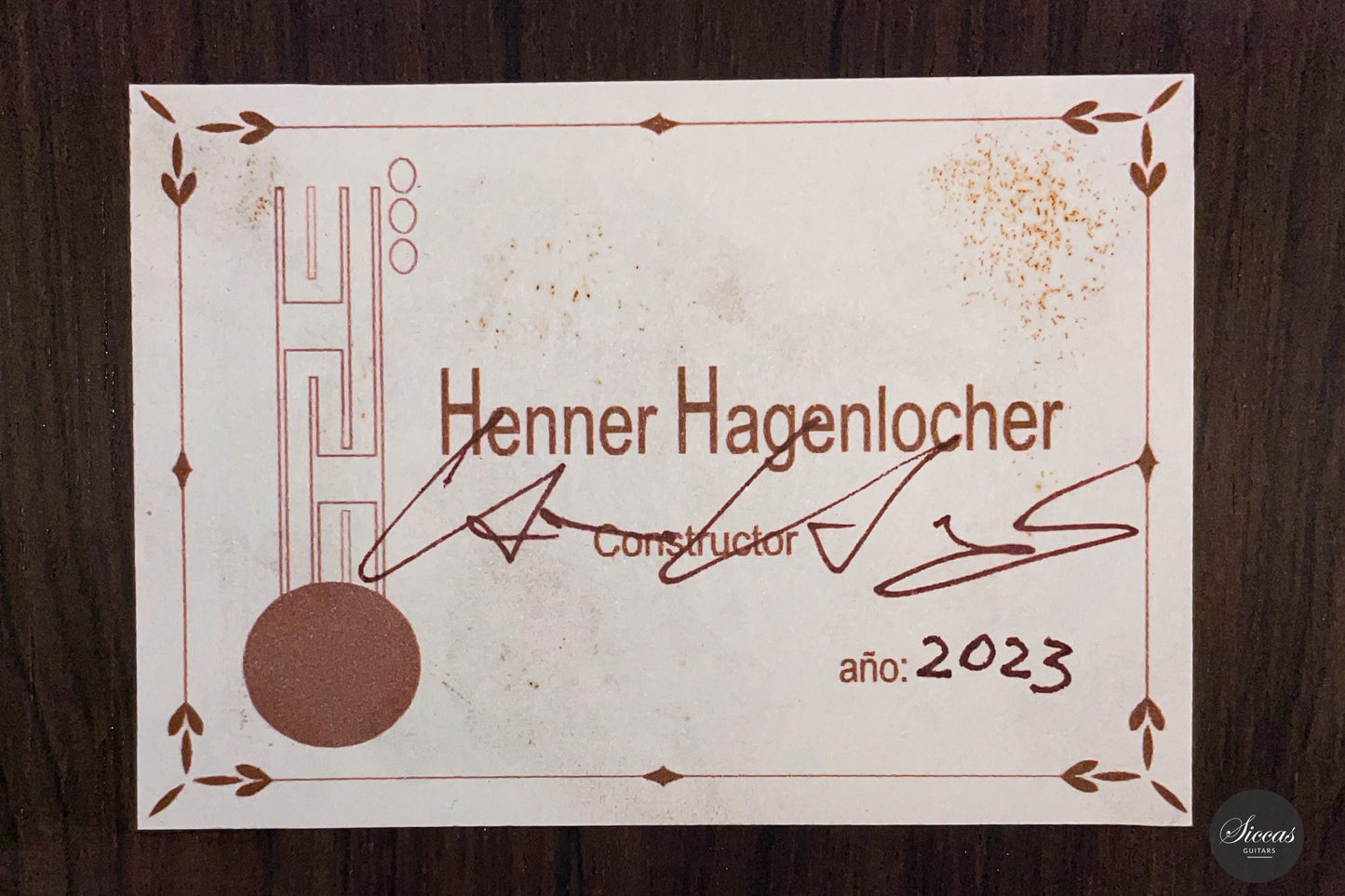Henner Hagenlocher - 2023 Lattice
Henner Hagenlocher - 2023 Lattice
Details
Details
Overview
Overview
Shipping important note
Shipping important note
Delivery times are typically reliable and most instruments arrive within the estimated timeframe.
Should any unexpected delay occur, our team will keep you informed and provide support at every step. For all shipping details and exceptions, please see our Shipping Policy.
Details about GPSR
Details about GPSR






















More details about the guitar
About the luthier
In the storied alleyways of Granada, a tale of artistry unfolds in the hands of Henner Hagenlocher, a master luthier with deep roots in the rich traditions of guitar-making. His journey, which began under the guidance of Michael Wichmann in Hamburg, was passionately driven by a reverence for the works of Antonio de Torres. Henner’s thirst for perfection took him to London’s Guildhall University, where his grasp over Music-Technology was deepened.About the guitar
Henner Hagenlocher’s guitar, featuring a cedar soundboard and Indian rosewood back and sides, represents a fine example of modern classical guitar craftsmanship. The utilization of a lattice bracing system is a notable aspect of this guitar, showcasing Hagenlocher’s root in his classical guitar making.Hagenlocher’s guitar is described as having great volume and a direct response. These characteristics are indicative of the efficient energy transfer and sound projection capabilities provided by the lattice bracing system. The direct response also contributes to the comfort and playability of the guitar, making it more responsive to the nuances of the player’s technique.
The sustain in the trebles, which is particularly noted for its ability to carry melody lines, is a crucial attribute for classical guitarists. This allows for expressive phrasing and a singing quality in the melody, essential for various styles and repertoires.
Overall, Hagenlocher’s guitar is a fine representation of modern lutherie, blending traditional tonewoods with innovative construction techniques. The combination of cedar and Indian rosewood, along with the lattice bracing, culminates in an instrument that is not only beautiful to look at but also powerful and expressive in its sound.
Regular care extends the life of the instrument
Even with careful use, a classical guitar may gradually change in appearance or respond to unstable storage conditions. Have a close look at your guitar regularly and be attentif to changes. If your instrument is suffering from its environement, it will let you know.
Protect Your Guitar: Handle with Care
Be mindful when touching your instrument with greasy or unwashed hands: any skin contact is a small attack on the varnish. Of course, a guitar is made to be played, but taking a few precautions helps preserve its beauty: wash your hands before playing, wear long sleeves, and avoid unnecessary direct skin contact with the body of the instrument.
Pro tip: Avoid playing with a button-up shirt, heavy jewelry, or a belt, as these can scratch the guitar. Also, make sure your guitar case is free of any objects that could damage the instrument during storage.
String care
A good habit to adopt is wiping down your strings briefly after each playing session. This small action significantly extends their lifespan and helps maintain a consistent, comfortable feel under your fingers.
Most importantly, clean strings are essential for keeping your instrument in tune. Corrosion, sweat, and dust can affect the uniformity of the strings and interfere with accurate tuning across the entire fingerboard.
Pro tip: If you're having trouble getting your guitar in tune, it might be time to change the strings. A useful test is to compare the pitch of the 12th fret harmonic with the fretted note at the 12th fret; if there's an unusually large gap between them, your strings may have lost their integrity and should be replaced.
Keep Your Shellac Finish Shining!
Got a guitar with a shellac (French polish) finish? Here's a simple trick: Take a clean microfiber cloth and gently breathe on the surface to create a light mist. Then, softly rub to remove fingerprints, sweat, and grease. That’s usually all it takes to keep it looking great, no products needed!
Pro tip: Every few years, treat your guitar to a check-up with a luthier to keep it in top shape.
Storing Your Guitar: Climate Matters
Your guitar can safely stay outside its case, as long as the surrounding environment maintains 42–55% humidity and a temperature between 18–25°C.
Keep in mind that humidity levels can still fluctuate inside the case, especially during seasonal changes.
- Too much humidity may cause overtightened strings and a dull tone.
- Too little humidity can lead to a bulging top, string buzz, or even cracks.
Avoid placing your guitar near radiators, air conditioners, or windows with direct sunlight.
Pro tip: Always close your guitar case while playing. This helps preserve a stable microclimate inside the case, so your instrument is protected the moment you put it back in.













































